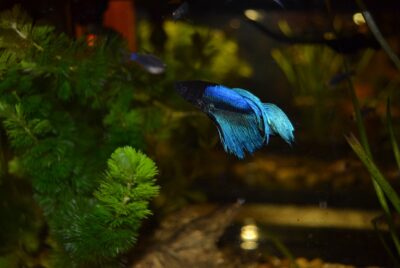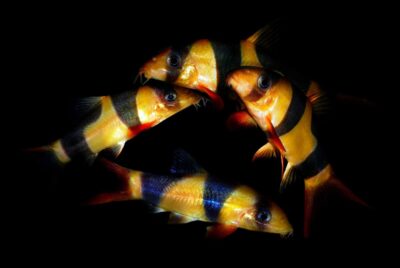Can Aquarium Plants Grow in Gravel
As an avid fishkeeping enthusiast, I am often asked, “Can aquarium plants grow in gravel?” It’s a question that arises when considering the best substrate for a thriving aquatic plant environment. Today, I’ll delve into the world of aquarium substrates and shed light on whether gravel is a suitable medium for nurturing aquatic plants. So, let’s dive in!
Introduction
Aquarium plants not only add natural beauty to our aquatic habitats but also play a crucial role in maintaining a healthy ecosystem. The choice of substrate, the material at the bottom of the aquarium, is a key factor in supporting plant growth. While there are various substrates available, gravel is a popular choice due to its affordability, ease of maintenance, and aesthetic appeal. But can aquarium plants truly thrive in gravel? Let’s find out!
Understanding the Role of Substrate in Aquariums
Before delving into the specifics of using gravel as a substrate for growing aquarium plants, it’s essential to understand the role substrates play in aquatic ecosystems. The substrate serves as a foundation, providing anchorage for plants, acting as a filter for organic waste, and serving as a medium for nutrient absorption. It also houses beneficial bacteria, contributing to biological filtration.
Exploring the Benefits of Gravel as a Substrate
Gravel offers several advantages as a substrate choice for aquarium plants. Firstly, it provides stability, preventing plants from uprooting during fish activities or water movement. The uneven surface of gravel also aids in the establishment of beneficial bacteria colonies. Additionally, gravel allows for adequate water circulation and oxygenation, crucial for healthy root development.
Considerations for Growing Aquarium Plants in Gravel
To successfully grow aquarium plants in gravel, certain considerations must be taken into account. Let’s explore these factors in detail.
Selecting Suitable Plant Species – (Can Aquarium Plants Grow in Gravel)
Not all aquarium plants thrive in gravel. It’s essential to choose plant species that are known to grow well in this substrate type. Examples of plants suitable for gravel include Anubias, Java Fern, Amazon Sword, Cryptocoryne, and Vallisneria. Researching each plant’s specific requirements is vital for their successful cultivation.
Preparing the Gravel Bed – (Can Aquarium Plants Grow in Gravel)
To create an optimal environment for plant growth, prepare the gravel bed by rinsing it thoroughly to remove any dust or debris. This ensures a clean and safe substrate for your plants. Spread the gravel evenly across the aquarium floor, aiming for a depth of around 1-2 inches, which allows for proper root development.
Providing Sufficient Nutrients – (Can Aquarium Plants Grow in Gravel)
Gravel alone may not provide sufficient nutrients for plant growth. It is advisable to supplement the substrate with root tabs or fertilizer balls to ensure a steady supply of essential nutrients like iron, potassium, and micronutrients. These supplements can be placed in the gravel near the plant roots, providing direct access to the nutrients.
Ensuring Proper Lighting
Lighting is crucial for photosynthesis, the process by which plants convert light energy into chemical energy. Adequate lighting is necessary for healthy plant growth. When using gravel as a substrate, it’s important to ensure that the aquarium receives the right amount of light. Consider using LED lights specifically designed for aquarium plants or placing the aquarium near a natural light source while avoiding direct sunlight, which can cause algae blooms.
Maintaining Water Parameters
In addition to lighting and nutrients, maintaining appropriate water parameters is essential for the well-being of aquarium plants. Regularly test the water for pH, temperature, and hardness to ensure they fall within the preferred range for the plant species you’ve chosen. Consistency in water parameters provides a stable environment for plants to thrive.
Tips for Successful Plant Growth in Gravel – (Can Aquarium Plants Grow in Gravel)
To maximize the potential of your aquarium plants in a gravel substrate, here are some helpful tips to follow:
Using Root Tabs or Fertilizer Balls
Supplementing the gravel with root tabs or fertilizer balls provides a continuous release of nutrients directly to the plant roots. This ensures a steady supply of essential elements for optimal growth and vibrant foliage.
Implementing CO2 Injection
Carbon dioxide (CO2) is a crucial component for photosynthesis. Consider implementing a CO2 injection system to provide an additional source of carbon dioxide for your plants. This can significantly enhance their growth and overall health.
Regular Pruning and Maintenance
Aquarium plants require regular pruning to remove dead or decaying leaves, promoting new growth and preventing the accumulation of organic waste. Perform routine maintenance tasks such as water changes and substrate vacuuming to maintain a clean and healthy environment.
Controlling Algae Growth
Algae can be a common challenge in aquariums. To minimize its growth, maintain proper lighting durations, avoid overfeeding, and ensure a balanced nutrient supply. Algae compete with plants for nutrients, light, and space, so keeping their growth in check is crucial for the success of your aquarium plants.
Consideration for Fish Compatibility
When selecting plant species, consider the compatibility with your fish. Some fish species may uproot or nibble on delicate plants. Choose plants that can coexist harmoniously with your fish, ensuring a balance between a thriving plant environment and the well-being of your aquatic inhabitants.
Common Misconceptions about Growing Plants in Gravel – (Can Aquarium Plants Grow in Gravel)
When it comes to growing plants in gravel substrates, there are several common misconceptions that often circulate among aquarium enthusiasts. These misconceptions can lead to confusion and hinder the successful cultivation of aquatic plants. Let’s shed some light on these misconceptions and provide a deeper understanding of growing plants in gravel.
Misconception 1: Gravel Inhibits Root Growth
One prevalent misconception is that plants struggle to establish strong root systems in gravel substrates. However, when the gravel is prepared properly and the appropriate plant species are chosen, root growth can thrive. It’s crucial to select plants that are adapted to growing in gravel and have the ability to anchor themselves firmly. These plants often have robust root systems that can penetrate the gravel and draw nutrients effectively.
Misconception 2: Fish Waste Alone Provides Sufficient Nutrients
Another misconception is the belief that fish waste alone can provide all the necessary nutrients for plant growth in a gravel substrate. While fish waste does contain essential nutrients, relying solely on it may not meet the plants’ requirements. It’s important to understand that fish waste provides organic matter that needs to be broken down by beneficial bacteria, releasing nutrients into the substrate. However, supplementing with additional fertilizers, root tabs, or nutrient-rich substrates is still necessary to ensure optimal plant growth and vibrant foliage.
Misconception 3: Gravel Requires Frequent Stirring or Mixing
Some aquarium enthusiasts mistakenly believe that gravel substrates require frequent stirring or mixing to prevent compaction and promote nutrient circulation. While it is true that stagnant areas can develop in the substrate, regular maintenance tasks such as water changes, substrate vacuuming, and occasional gentle stirring during water changes are usually sufficient. The goal is to prevent debris buildup and maintain water flow around the roots, ensuring an oxygenated and nutrient-rich environment.
Misconception 4: Gravel Negatively Affects Water Parameters
There is a common misconception that gravel substrates can adversely impact water parameters such as pH, hardness, or ammonia levels. However, properly chosen and prepared gravel substrates typically have minimal impact on water chemistry. It’s important to note that water parameters are influenced by various factors, including the choice of fish, the type of plants, and overall aquarium maintenance. Regular testing and appropriate adjustments can help maintain stable and suitable water conditions for both plants and aquatic life.
Misconception 5: Gravel Limits Plant Variety and Growth
Some believe that gravel substrates limit the variety of plants that can be grown in an aquarium. While it is true that certain carpeting plants or species with delicate root systems may require finer substrates, there is still a wide range of plant species that thrive in gravel. Plants such as Anubias, Java Fern, Amazon Sword, Cryptocoryne, and Vallisneria are known to grow well in gravel substrates. With proper care and attention to the specific requirements of different plants, a diverse and visually appealing aquatic flora can be achieved.
By dispelling these misconceptions and gaining a better understanding of growing plants in gravel substrates, aquarium enthusiasts can confidently create thriving aquatic plant environments. Remember to select suitable plant species, provide adequate nutrients, ensure proper lighting, and maintain appropriate water parameters. With the right approach, gravel can be an excellent substrate choice for nurturing beautiful and healthy aquarium plants.
Conclusion
In conclusion, aquarium plants can indeed grow in gravel substrates with the right considerations and care. Gravel offers stability, adequate water circulation, and a suitable environment for beneficial bacteria. By selecting appropriate plant species, preparing the gravel bed, providing sufficient nutrients, ensuring proper lighting, and maintaining water parameters, you can create an ideal setting for beautiful and thriving aquatic plants in your aquarium.
Frequently Asked Questions – (Can Aquarium Plants Grow in Gravel)
Q: Can I use any type of gravel for my aquarium plants?
A: It’s best to use aquarium-specific gravel as it is free from harmful chemicals or substances that can harm your plants or aquatic life.
Q: Can I grow carpeting plants in gravel?
A: Carpeting plants usually require a finer substrate, such as sand or specialized plant substrates, to spread and anchor properly.
Q: How often should I add root tabs or fertilizers to my gravel substrate?
A: The frequency depends on the specific needs of your plants and the type of fertilizers you are using. Follow the manufacturer’s instructions for the recommended dosage and application frequency.
Q: Should I remove the plants from the gravel when pruning?
A: It’s not necessary to remove the plants from the gravel when pruning. Simply trim the necessary parts while the plants are still in the aquarium.
Q: Can I use gravel as the sole substrate for a planted tank?
A: While it is possible to use gravel as the sole substrate, supplementing with root tabs or fertilizers is highly recommended to ensure adequate nutrient supply for the plants.




